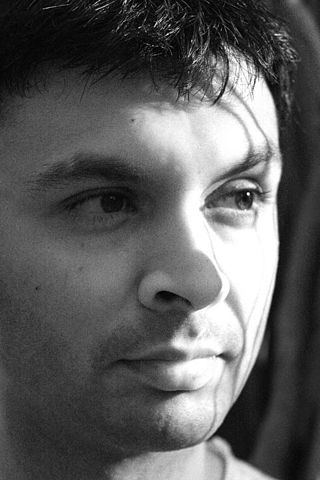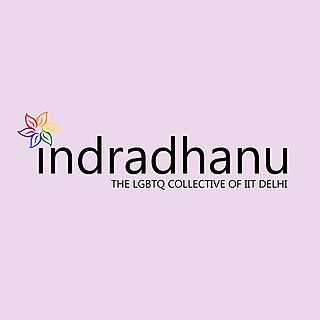Hindu views of homosexuality and LGBT issues more generally are diverse, and different Hindu groups have distinct views.
Section 377 of the British colonial penal code criminalized all sexual acts "against the order of nature". The law was used to prosecute people engaging in oral and anal sex along with homosexual activity. As per Supreme Court Judgement since 2018, Indian Penal Code Section 377 is used to convict non-consensual sexual activities among homosexuals with a minimum of ten years imprisonment extended to life imprisonment. It has been used to criminalize third gender people, such as the apwint in Myanmar. In 2018, then British Prime Minister Theresa May acknowledged how the legacies of British colonial anti-sodomy laws continue to persist today in the form of discrimination, violence, and death.
Homosexuality in India is legally permitted and tolerated by the most of the traditional native philosophies of the nation, and legal rights continue to be advanced in mainstream politics and regional politics. Homosexual cohabitation is also legally permitted and comes with some legal protections and rights.

Lesbian, gay, bisexual, and transgender (LGBT) rights in India have expanded in the 21st century, though much of India's advancements on LGBT rights have come from the judiciary and not the legislature. Indian LGBT citizens still face social and legal difficulties not experienced by non-LGBT people.

Lesbian, gay, bisexual, transgender, and queer (LGBTQ) people in Bangladesh face widespread social and legal challenges not experienced by non-LGBTQ people.
India does not recognise same-sex marriage, civil unions or other forms of partnerships, but provides some limited legal recognition to cohabiting same-sex couples in the form of live-in relationships. Several same-sex couples have married in traditional Hindu ceremonies since the late 1980s; however, these marriages are not registered with the state and couples do not enjoy all the same rights and benefits as married opposite-sex couples. The Supreme Court of India in August 2022 provided social security rights to those in same-sex live-in relationships while also recognising same-sex couples as being part of a "family unit".

Naz Foundation v. Govt. of NCT of Delhi (2009) is a landmark Indian case decided by a two-judge bench of the Delhi High Court, which held that treating consensual homosexual sex between adults as a crime is a violation of fundamental rights protected by India's Constitution. The verdict resulted in the decriminalization of homosexual acts involving consenting adults throughout India. This was later overturned by the Supreme Court of India in Suresh Kumar Koushal vs. Naz Foundation, in which a 2 judge bench reinstated Section 377 of the Indian Penal Code. However, even that was overturned by a 5 judge bench in Navtej Singh Johar v. Union of India in 2018, decriminalizing homosexuality once again.

India's LGBTQ culture has recently progressed in its cities due to the growing acceptance of the LGBTQ community in urban India in the 21st century.
Aditya Bandopadhyay is a lawyer and LGBTQ rights activist in India, helping to challenge anti-sodomy laws, establishing advocacy organizations and providing legal services to HIV/AIDS organizations.

Harish Iyer, also known as "Aham", hiyer and "Harrish Iyer" is an Indian equal rights activist. Iyer engages in advocacy for a number of causes, including promoting the rights of the lesbian, gay, bisexual, and transgender (LGBT) community, children, women and survivors of child sexual abuse.

Delhi Queer Pride Parade is organised by members of the Delhi Queer Pride Committee every last Sunday of November since 2008. The queer pride parade is a yearly festival to honour and celebrate lesbian, gay, bisexual and transgender people, and their supporters. The parade usually runs from Barakhamba Road to Tolstoy Marg to Jantar Mantar.
This is a timeline of notable events in the history of non-heterosexual conforming people of South Asian ancestry, who may identify as LGBTIQGNC, men who have sex with men, or related culturally-specific identities such as Hijra, Aravani, Thirunangaigal, Khwajasara, Kothi, Thirunambigal, Jogappa, Jogatha, or Shiva Shakti. The recorded history traces back at least two millennia.
AIDS Bhedbhav Virodhi Andolan was the first HIV/AIDS activist movement in India founded in 1988 in New Delhi. The group received popular recognition with the publication of its pioneering report "Less than Gay" in 1991. Through this report, ABVA advocated for civil rights of LGBTQ people to include same sex marriage, LGBT parenting, and the decriminalization of homosexuality through the repeal of Section 377 of the Indian Penal Code. In 1994, ABVA filed the first petition challenging the constitutionality of Section 377 in the Delhi High Court, in order to challenge prison authorities' ban on condom distribution.

Lesbian, gay, bisexual and transgender (LGBT) people in Kerala face legal and social difficulties not experienced by non-LGBT persons. However, Kerala has been at the forefront of LGBT issues in India after Tamil Nadu. It became one of the first states in India to establish a welfare policy for the transgender community and in 2016, proposed implementing free gender affirmation surgery through government hospitals. Same-sex sexual activity has been legal since 2018, following the Supreme Court ruling in Navtej Singh Johar v. Union of India. In addition, numerous LGBT-related events have been held across Kerala, including in Kochi and Thiruvananthapuram. However, there is also increasing opposition to LGBT rights recently as evidenced by the anti-LGBT campaigns spearheaded by meninist groups and Muslim organisations like Indian Union Muslim League, Samastha and Jamaat-e-Islami.

Bengaluru Namma Pride March is a queer pride march that is held annually in the city of Bengaluru in Karnataka, India, since 2008. The march is organised by a coalition called Coalition for Sex Workers and Sexuality Minority Rights (CSMR). The pride march is preceded by a month of queer related events and activities.

Suresh Kumar Koushal &Anr. v. NAZ Foundation &Ors.(2013) is a case in which a 2 judge Supreme Court bench consisting of G. S. Singhvi and S. J. Mukhopadhaya overturned the Delhi High Court case Naz Foundation v. Govt. of NCT of Delhi and reinstated Section 377 of the Indian Penal Code. The Supreme Court of India decided to revisit this judgement after several curative petitions were filed against it, in 2017. Thereby in 2018, Navtej Singh Johar v. Union of India, a 5 judge bench of the Supreme Court overturned this judgement, decriminalizing homosexuality. Portions of Section 377 relating to sex with minors, non-consensual sexual acts such as rape, and bestiality remain in force.
Tamil sexual minorities are Tamil people who do not conform to heterosexual gender norms. They may identify as LGBTQIA. It has been estimated that India has a population of 2.5 million homosexuals, though not all of them are Tamil, and not all Tamils live in India.
The following list is a partially completed compilation of events considered to have a profound effect on the welfare or image of Tamil sexual minorities. The use of bold typeface indicates that the event is widely considered to be landmark:

Navtej Singh Johar &Ors. v. Union of India thr. Secretary Ministry of Law and Justice (2018) is a landmark decision of the Supreme Court of India that decriminalised all consensual sex among adults, including homosexual sex.

Indradhanu is the official LGBTQIA+ collective of Indian Institute of Technology Delhi. The student-driven collective aims to create a safe space for LGBT+ persons in the institute's campus. Members from Indradhanu have also been petitioners in the decriminalisation of homosexuality in India. In December 2021, it was accorded official recognition by the college administration. It now holds a nominated position in the Student Affairs Council of IIT Delhi and works with the office of Diversity and Inclusion, IIT Delhi.














